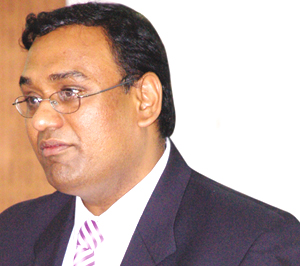
Intel has conceptualised four vectors that need to be considered in order to Empower Mobile Health Workers. It talks about achieving a single technology platform- Sashakt
Sashakt is an Open Access / No Charge data acquisition and analytics solution that enables rural health workers to collect relevant health information anywhere, anytime and make meaningful use of the data in order to better serve their beneficiaries. Architected to circumvent key constraints in rural environments and designed with a user friendly interface with first time users of technology in mind.
A holistic approach needs to be taken if we are looking at not just solving the current issues faced at the rural and under served urban health worker level. The technology framework that needs to be adopted should be able to handle not just the current requirements but also factor scenarios when these health workers may need to adapt to face newer challenges due to a changing disease pattern. The National Rural Health Mission (NRHM) has envisaged village level health plans and monitoring of those plans. Ability to have meaningful discussions, driven by health data of the community, would help a health worker in improved planning & scheduling, inventory management as well as improving their trust and credibility amongst the community they serve.
Sashakt platform provides a crucial capability for Ministries of Health to help improve health indicators and focus on the well being of their citizens. It is designed to be both more scalable as well as sustainable in comparison to the existing manual and individualized methods (of data collection and service delivery) by leveraging ICT to reach people where they live and work. One of the key challenges to attain the goals above is ensuring that the capacity of rural health workers is commensurate with the health needs of the country. In addition to that, existing rural health workers should have access to an information system that helps them in continuously assessing their communities health care needs, setting their priorities and planning their work
more efficiently. This will help them in contributing to an effective public health surveillance system that can be used for need based health planning and timely response to needs in the community. Ashok Chandavarkar adds, I truly believe, that this solution would help drive improved service levels in public health delivery through point of care data capture in the field.

 Ashok Chandavarkar, Ashok Chandavarkar,APAC Regional Manager, Intel corporation Empowering field health workers and the medical officers with relevant and actionable public health information, helps them in taking meaningful decision on the health of the beneficiaries they care for |
 Dr Amol Goje, Director, VIIT At VIIT, we explore the ways in which information communication technology is being used as a tool to empower the poor. With a mission to provide world class infrastructure and teaching to reduce the digital divide, VIIT aims to provide technical solutions and persuade the entire society to take new leaps towards globalization |
Digital technologies play an important role in addressing these challenges. Investments in computers, broadband infrastructure, network connectivity, and effective content repurposed digitally in local language can help improve continued medical education of field health workers, expand healthcare access in underserved areas, and enhance the quality and consistency of rural health services. These changes, in turn, can accelerate progress toward national and international health goals. Just sharing content using technology is not going to solve the problem of capacity build ing. It is important that the platform be able to verify user participation and understanding via associated assessment which are stored and reported over the internet as connectivity is available.
Dr Amol Goje, Director VIIT, There is a series of software and hardware solutions developed and implemented by us to suit the needs of rural community.
Affordable Connected Medical Devices would play a major role in improving clinical data quality. Considering the skill level of the health workers these devices need to be ruggedized, simple to use, reliable and consistent and most importantly have bi-directional interoperability. Interoperability standards such as Continua are recommended to be adopted by the eco-system that would enable the same technology platform to interface with Continua certified medical devices.
The solution enables health department to
- Collect preventive health data in an Offline mode, as prescribed by the government at the sub primary healthcare center level but adhering to standard data definitions (UIDAI, census 2011) in order to ensure interoperability with other government systems
- Develop public health indicator dashboards that are specific to the region or based on the state priorities providing decision making capabilities around planning and scheduling
Be a part of Elets Collaborative Initiatives. Join Us for Upcoming Events and explore business opportunities. Like us on Facebook , connect with us on LinkedIn and follow us on Twitter , Instagram.













